STEPS
TOOLS
The Kettlebell swing is a very technical exercise. Executed correctly it can be a great complement to a performance training program. Swings increase core activation and posterior chain engagement.
Technique is critical. Kettlebells will increase shear loads on the spine and can result in back pain. If you are an inexperienced or novice lifter you should consult an expert prior to this activity.
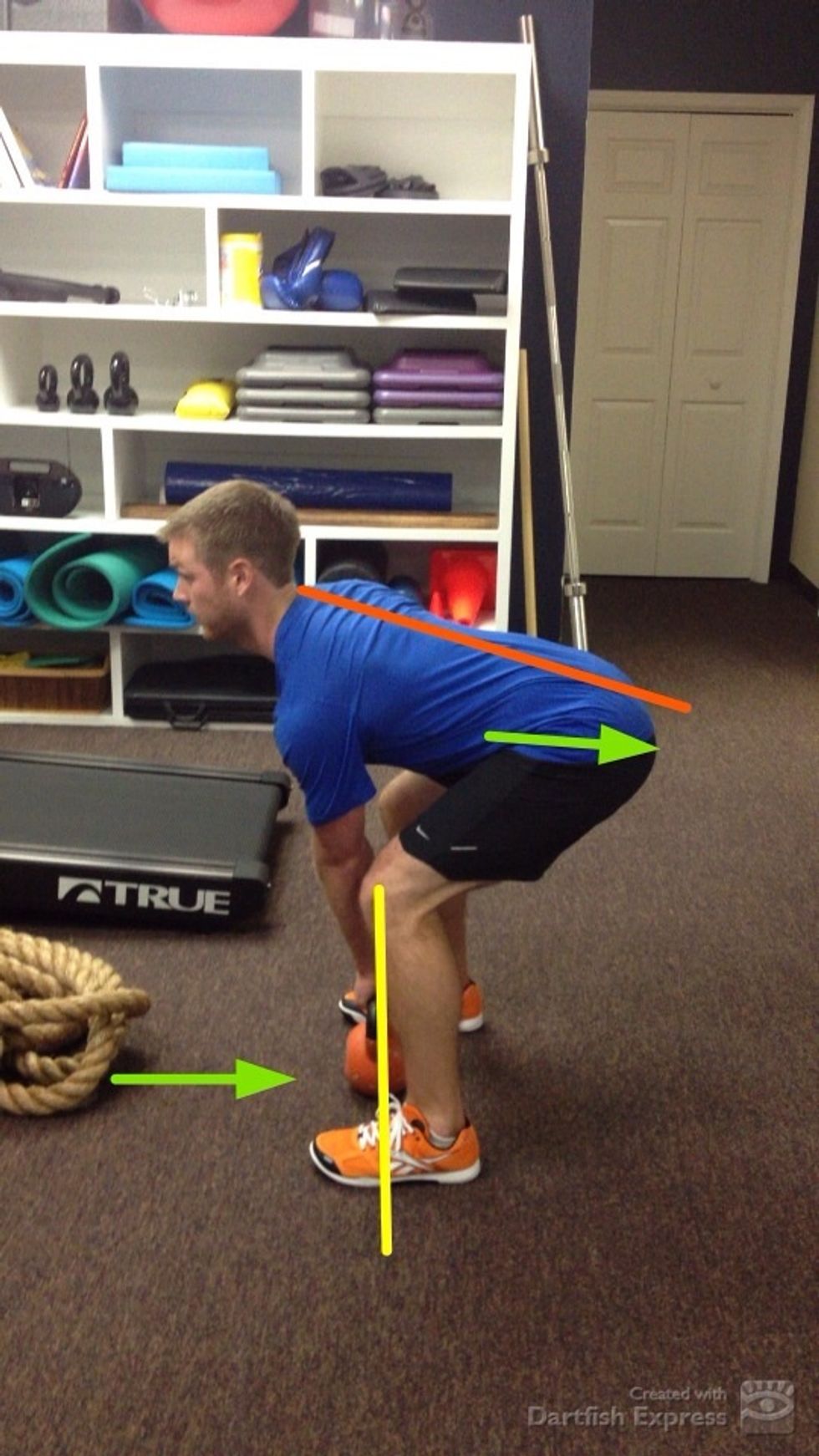
The kettlebell (KB) should be placed approximately mid foot in stance. Address the KB by hinging hips backward and bending the knees while maintaining a vertical shin & straight back.
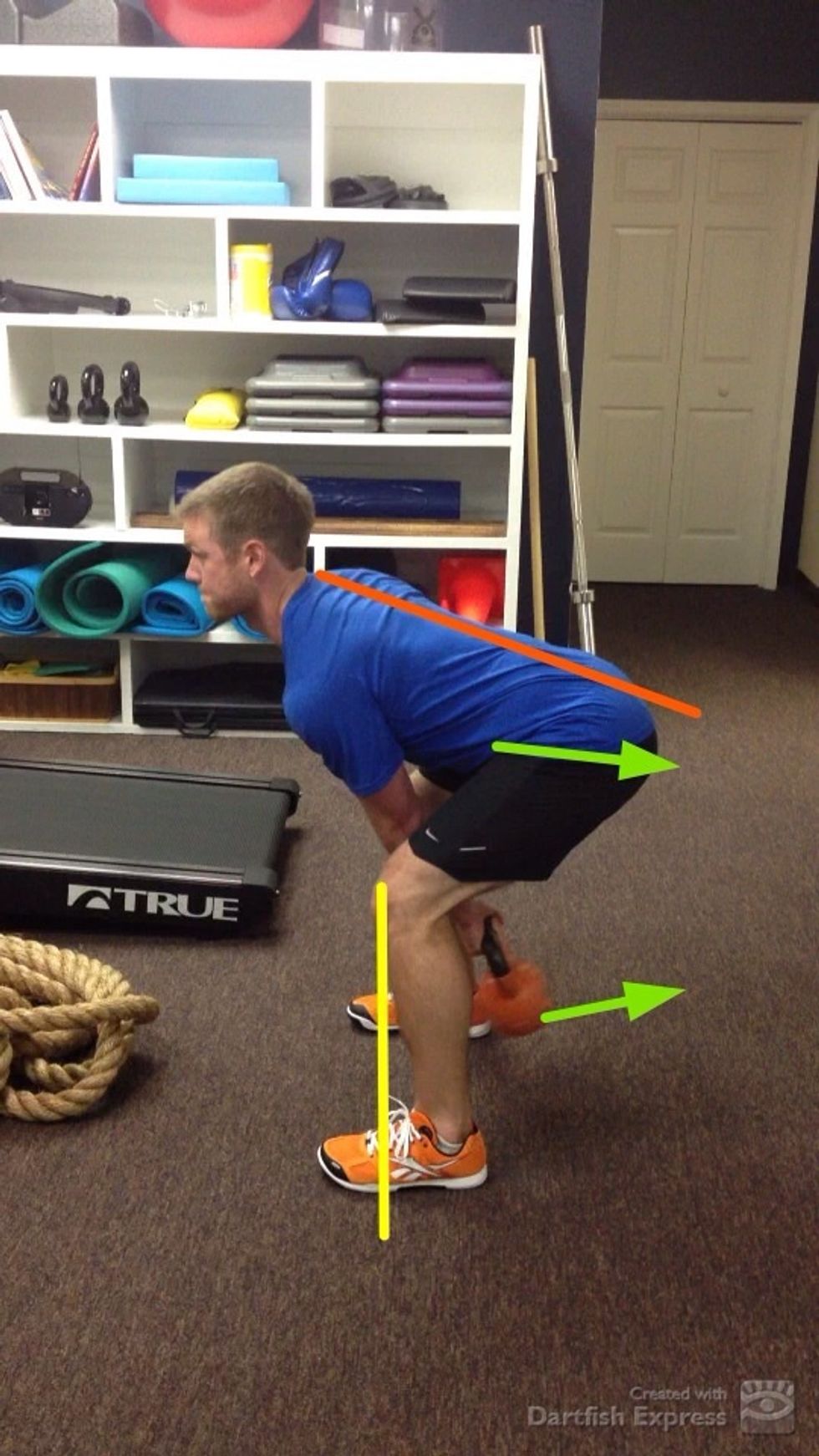
Gripping the KB initiate a slight backswing while maintaining a rigid torso.
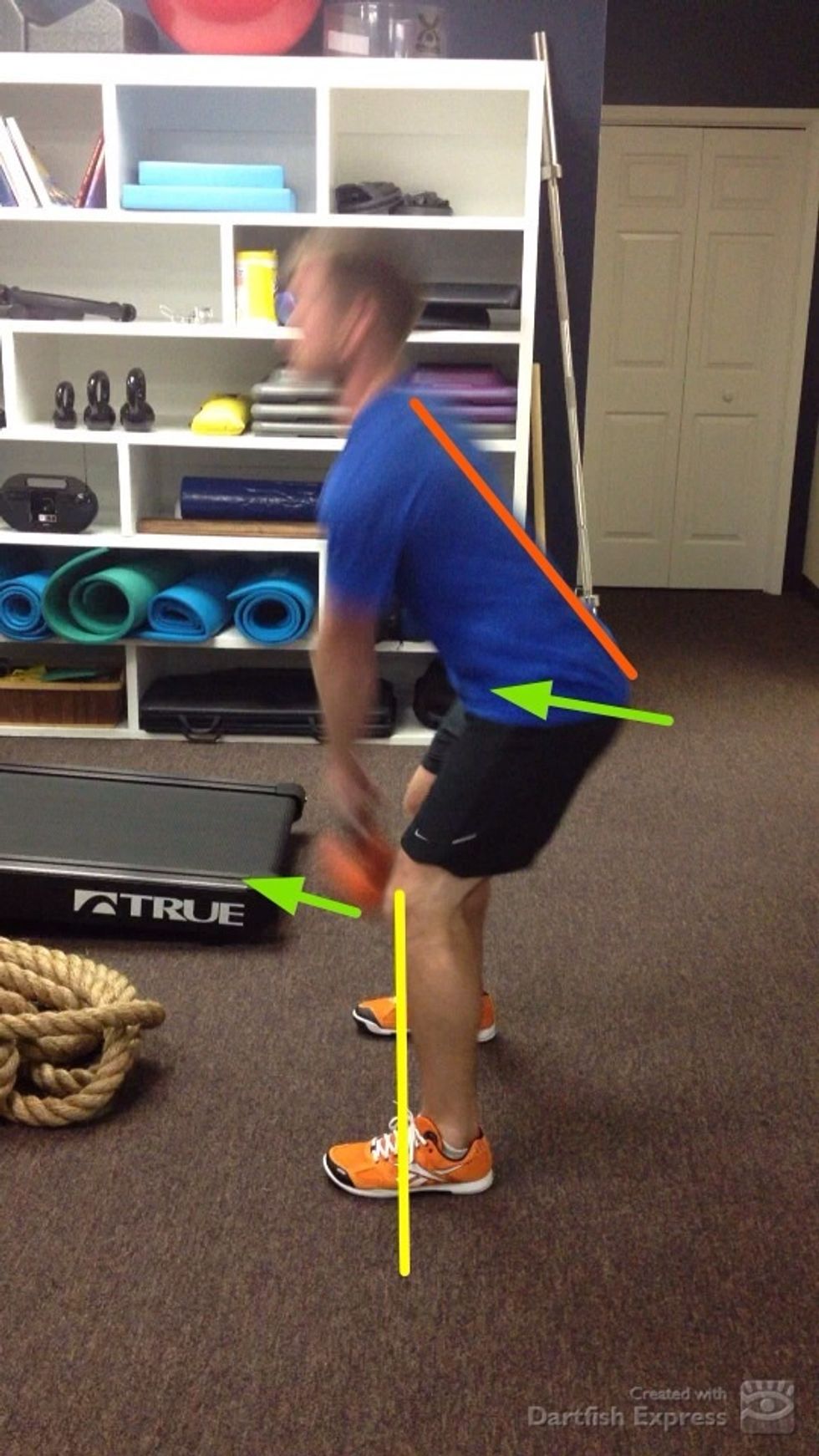
Pull the KB by driving through hips
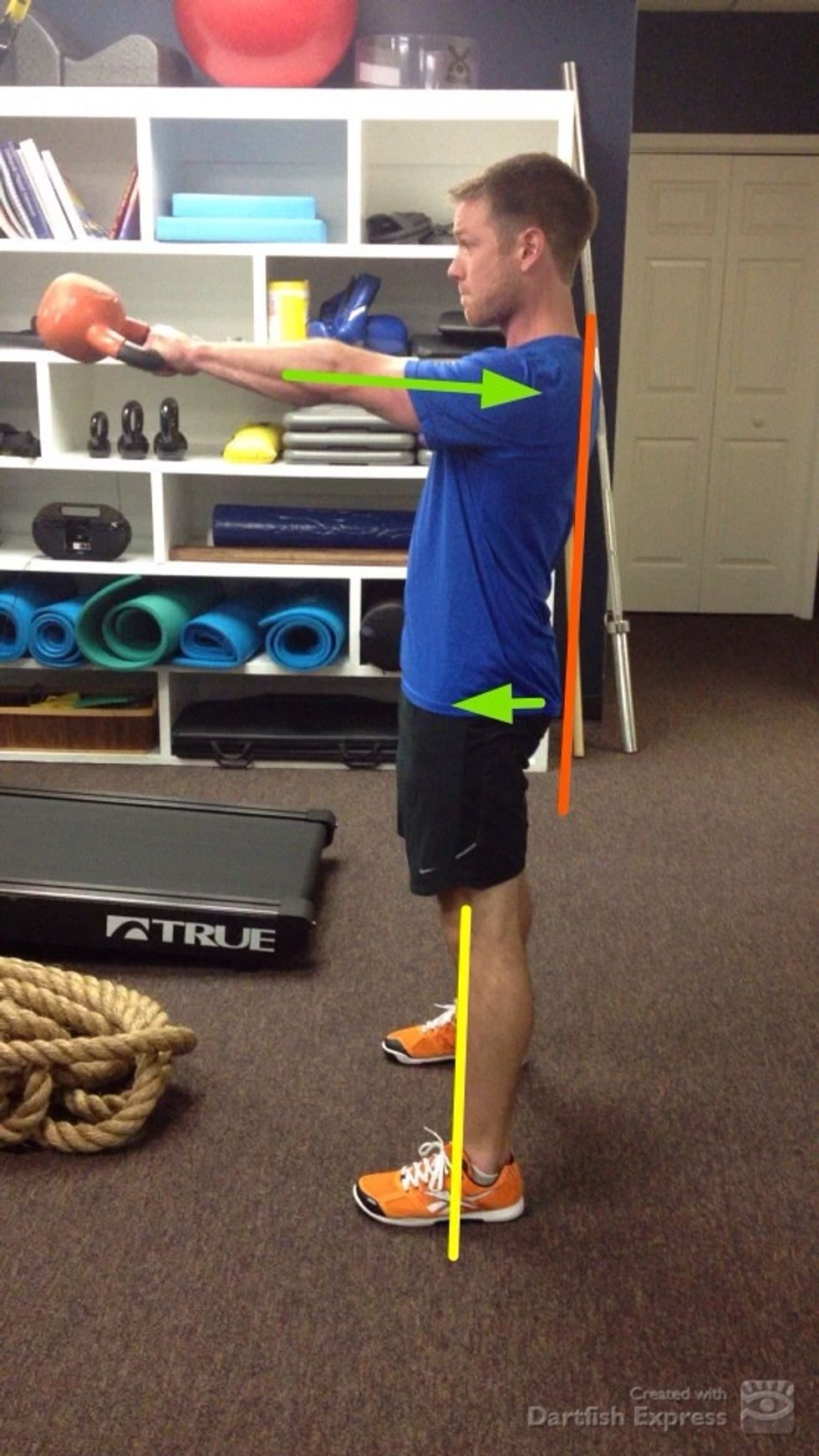
Finish the top of the pull with a tall spine posture, ridge core, neutral pelvis, a packed shoulder and squeeze the gluteal muscles.
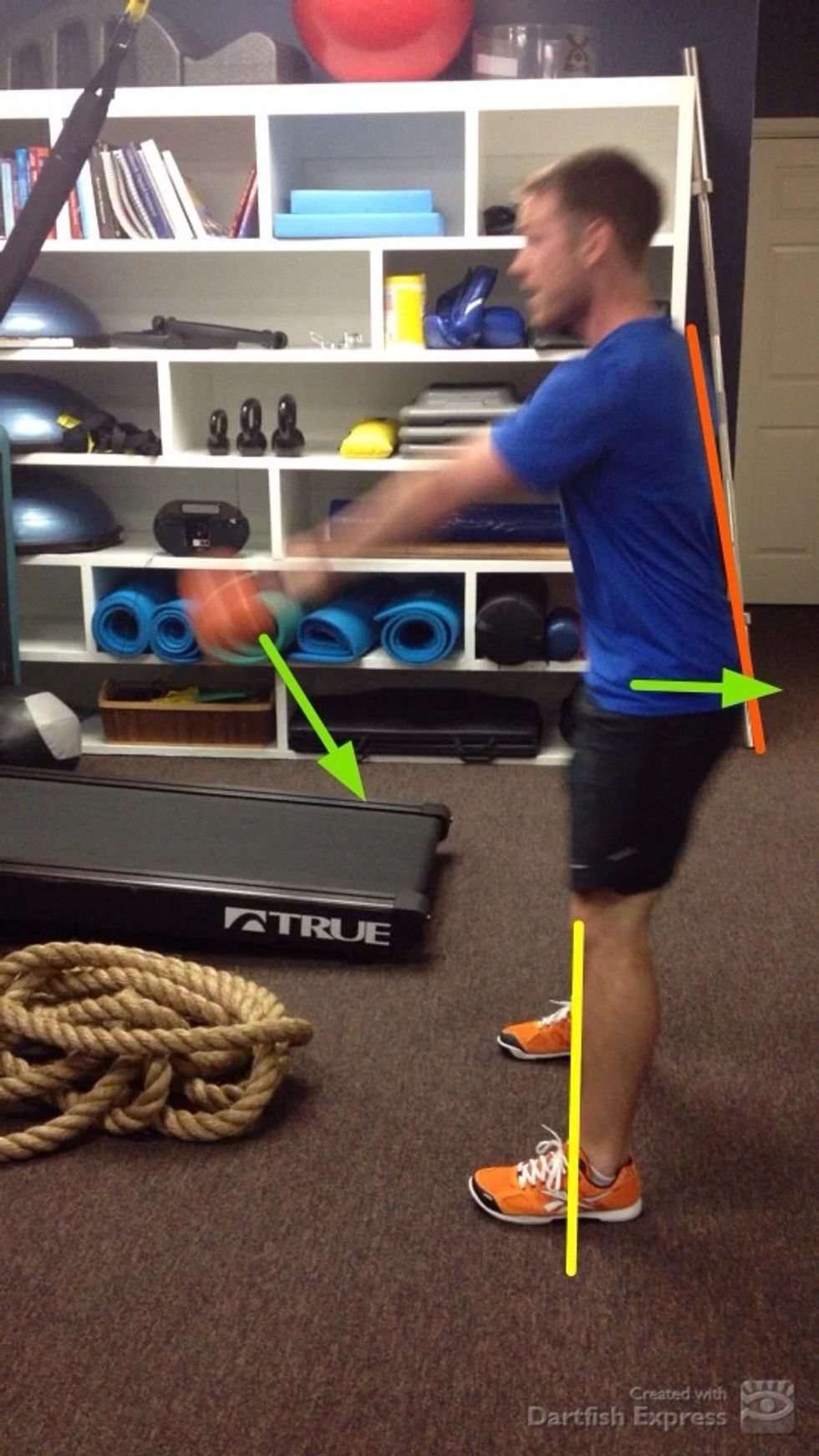
Descent should be smooth and controlled. Maintain a neutral spine and hinge the hips backward while bending the knees (maintain vertical shin) to lower the kettlebell.
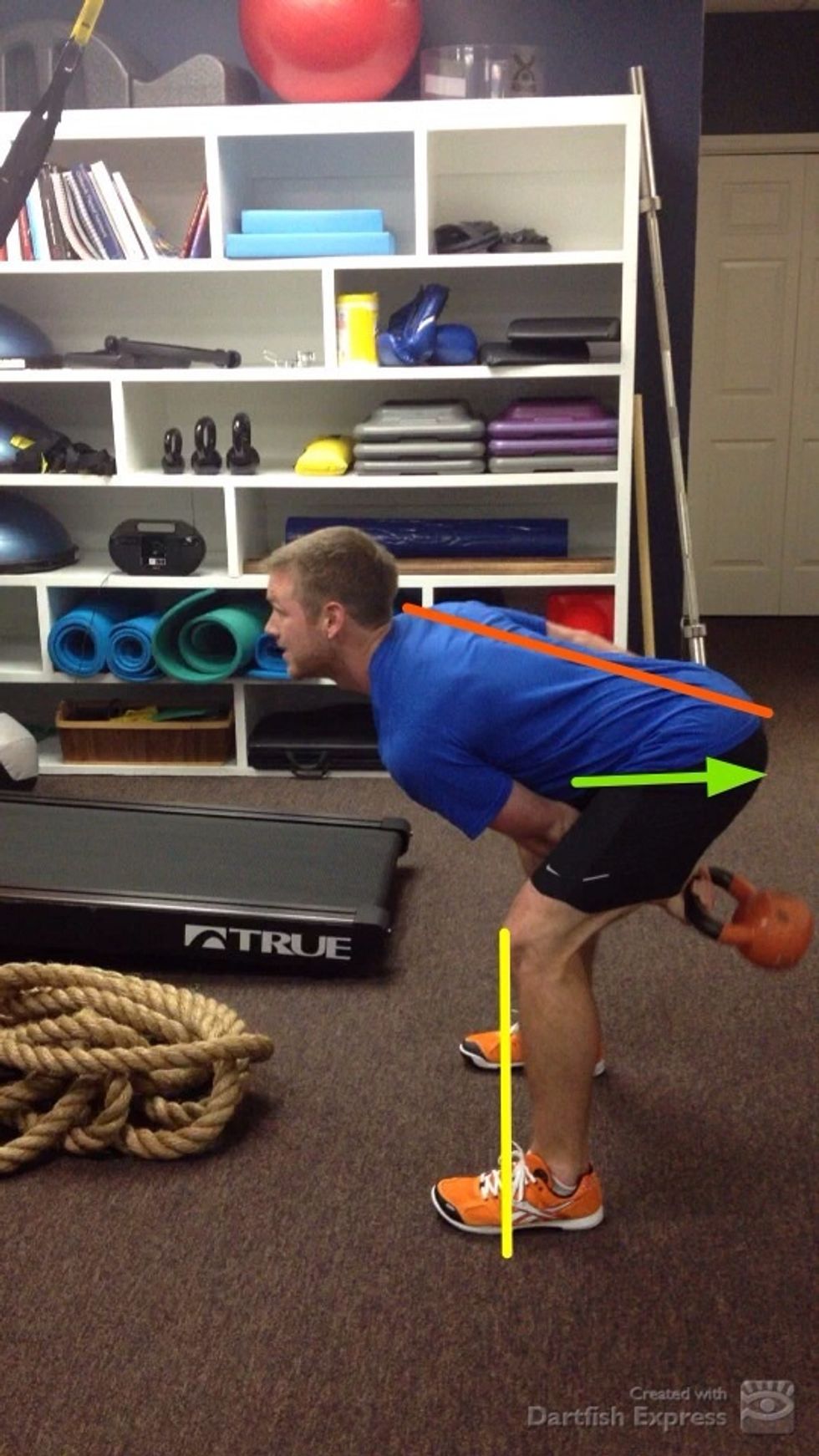
Finish descent with head up, neutral spine and pelvis, hips hinged backward, knees bent, vertical shin and the kettlebell momentum suspended. Repeat pull and descent cycle for desired reps.
The following slides are common movement errors that result in knee pain and back pain.
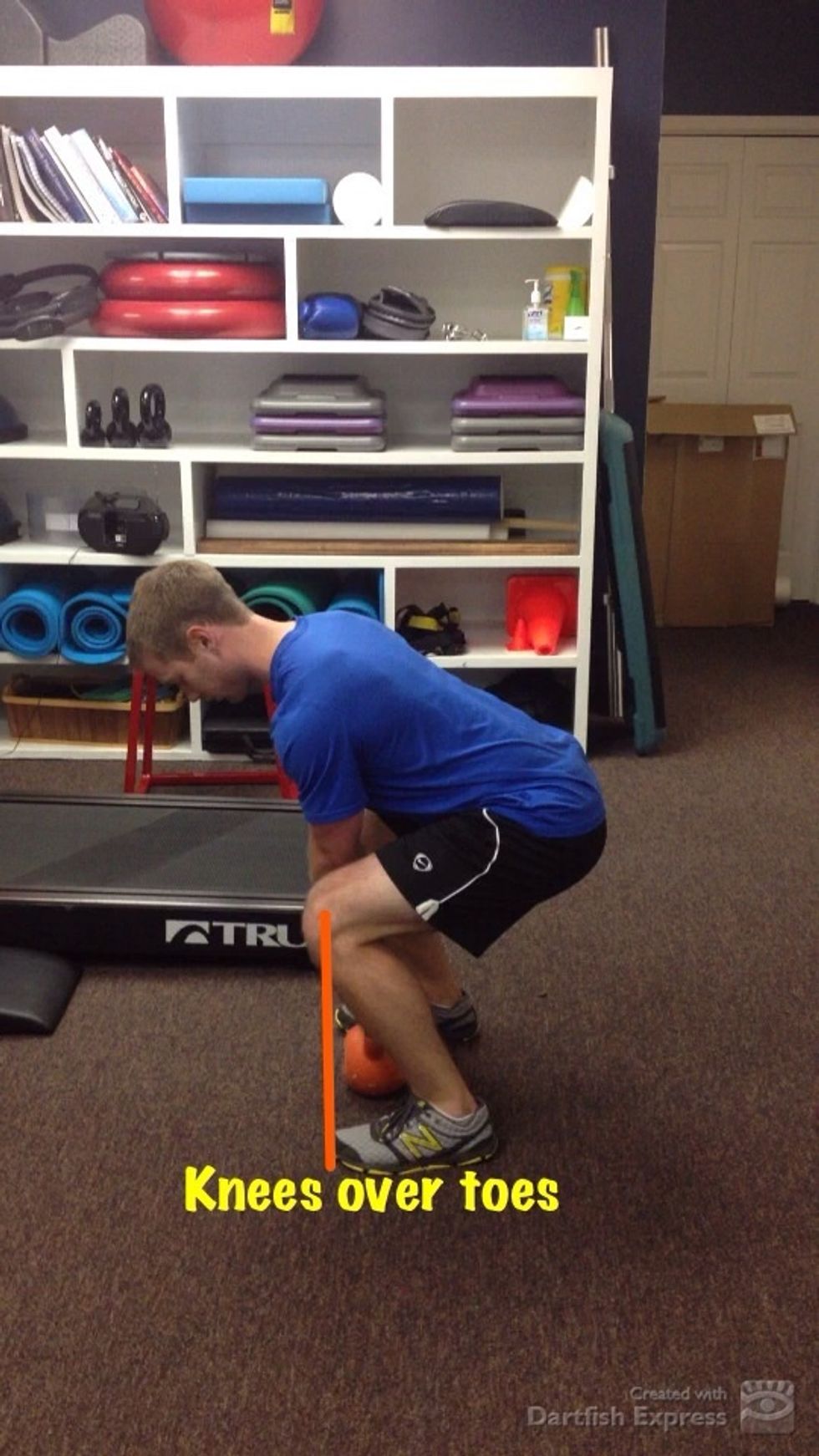
Squat pattern instead of hip hinge.

Flexing the lumbar spine during initial pull or subsequent repeated pulls.
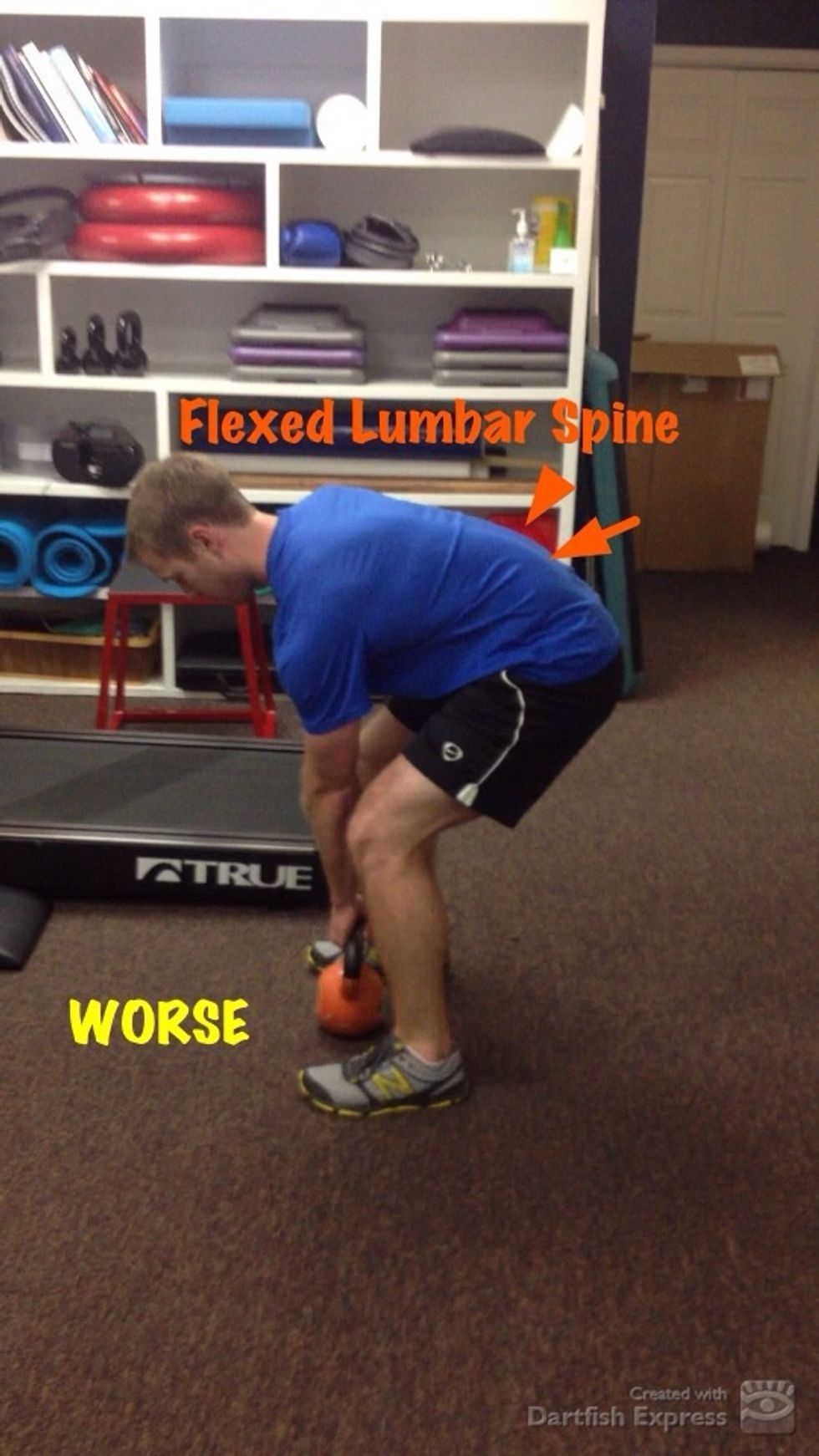
Increase lumbar flexion during pull.
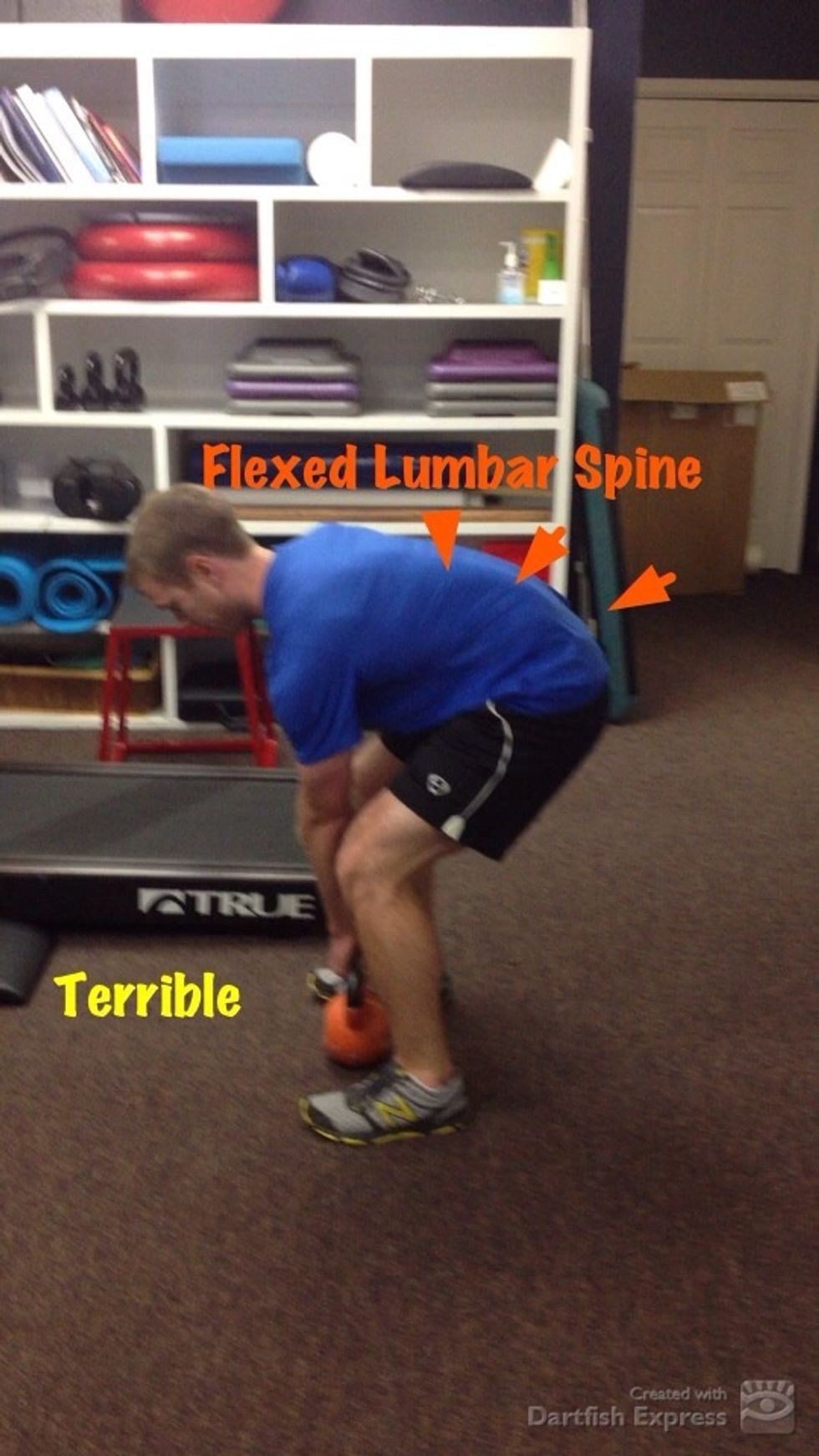
Flexion of lumbar and thoracic spine during pull.
- 1.0 Kettlebell
Dr. Jeffery Paul
Dr. Jeffery Paul is a board certified chiropractor, athletic trainer and strength and conditioning specialist. Sports medicine & sports performance consultant.
Marietta, GA
The Conversation (0)
Sign Up